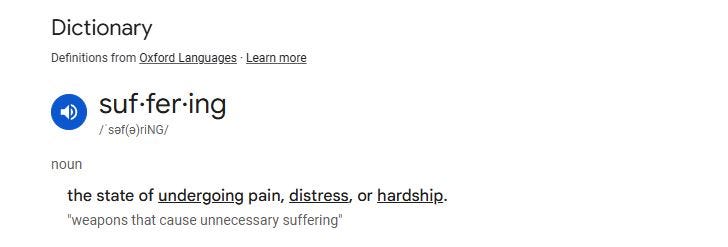Reshaping the Shape of Suffering
WHY I BECAME A HYPNOTIST
Image credit: Zerbor
When I tried to call it back—to just have a little chat—it didn’t come. And it’s not that I could even see it. I never really could.
Today, on those rare occasions when fragments drift in, it’s distant, murky, the shape unclear. Yet it was so much alive in me for so long. It felt deeply planted in the soil of the past - impressions of loss, not knowing, fear, and anxiety. A life viewed and lived through the lens of coping mechanisms. Rooted internally. Loud. Present. Always there.
Now, what lives in me is something else: A new sense of self. Purpose. A quiet pursuit of meaning.
I found myself saying to someone the other day, “When I was a kid, I just wanted to be famous. Known for something! Probably an extension of childhood wounds.” And then I paused. “But now? All I want is to live a life filled with meaning - a creative, artistic life.”
I’ve begun a journey of practicing the art of clinical hypnosis, again. It’s a life change. A career change that is rippling out across life like a smooth stone cast into a still pond. Several people that volunteered to be my practice clients, who were helping me get the hours for my re-certification, had asked “why now – why become a hypnotist?” I can see their point. It might seem curious to some but for me it was a natural progression of life experiences and the search for meaning in my life. I’ve been thinking about this very thing for several weeks - how to tell it - trying to put thoughts into words; to be able to explain this to anyone else who might ask.
And I began to ask myself “what’s changed and when did it happen?” Because I feel different. I feel really good about life, about what’s ahead and how I’m moving through this nebulous thing in front of me. I’ve traced the path backwards trying to find the moment when something shifted and came up short. I just watched the Tony Robbins documentary, I Am Not Your Guru, and he was asked a question about “the moment things changed for him” and he couldn't come up with one moment – the moment. He answered “it was a series of what I’ll call stacking moments” which resonated.
Seeing a therapist since 2021 was a place I dropped a marker when looking at the timeline of my healing journey. There were many good aha moments along that timeline but therapy has also felt like life, my life, was being lived in slow motion and my life was passing me by. I mean I am approaching 70 and my perspective has shifted when I think about “time”. There were weeks that moved into months and now years where I felt as if I was going to be stuck in the web of processing trauma forever. I’m not saying therapy is a bad thing. It’s been incredible in many ways, but it was only 50 minutes per session, each week. Sometimes it was one session every other week. I found myself wondering, how do I navigate the other 83 hours of living per week when I’m not in therapy? I revisited the 12 Step community, and it no longer felt like a good fit for me. I looked into Meetup groups and other countless “connection/community” avenues. Many of these seeds didn’t take or sprout but I have made some connections via Substack which are proving to be rich and quite wonderful.
For me, being diagnosed with C-PTSD was a salve, a knife, and a magnifying glass. It was a relief to have a name for what I had been experiencing for most of my life. It was also an awareness that brought with it feelings to navigate, and it uncovered a cluster of symptoms that were hooked into my past. It pointed a spotlight on coping mechanisms that had helped me to get through life. It was a type of pain and anguish that wasn’t seen from the outside which left me feeling alone. For me it was a type of pain that was jarring, consuming, never ending. I just couldn’t seem to get any relief because it was with me in sleep, which played out in nightmares, and it was with me during the day, all day, at work, watching movies, driving a car. Things would come out of seemingly nowhere and I would have a startle response being triggered by the smallest thing or would be triggered by a moment in a movie; a line of dialogue, a flash of sound—boom, triggered.
For me, that was suffering.
Somewhere along the therapy path, my therapist and I began doing EMDR. She would do a little education around the process and it was illuminating. It actually lit a spark. I began to get curious at how I could speed up the healing process – I’m a self-empowered kind of gal. I started reading about neuroplasticity, the brain, how trauma reshapes our wiring—and how we can reshape it back because our brains have this incredible plasticity. Then I went a little deeper and began doing some research about other modalities that foster neuroplasticity of the brain. There are many. I also found quite a bit of research backing the efficacy of hypnosis in helping people that have PTSD. I was a hypnotist a decade ago and had helped people let go of habituated patterns and transform their lives overcoming performance anxiety, learning how to manage stress, smoking cessation and weight loss to name a few, but my training, at that time and even though I was clinically certified, did not link hypnosis with neuroscience creating the powerful package as I understand it today.
And that curiosity-led, deep dive brought me back to hypnosis.
In January I made the decision to reinstate my certification and to start a small business and I stumbled onto Melissa Tiers, which was a synchronistic moment. She is a hypnotist and trainer out of New York who is world-renowned in the change work field. Her clients are mostly psychiatrists and therapists who want to weave her teachings into their private practices. I took one of her free classes and she completely blew me away. She frames/views addictions, phobias, triggers—not as fixed conditions but as habits of the mind within neural networks—and habits can be rewired. It was revolutionary. I knew this was the next step for me.
That was it. That was the thing I didn’t even know I was searching for. A way to work with the brain directly. To rewire it. To create change without years of excavation. To be able to empower people with agency and walk into their own lives with their personal power in wiping out procrastination, sleep issues, performance anxiety, phobias, anxiety, the habit of smoking; to foster weight loss, stress management, positive motivation, and confidence. And this is a partial list.
Of course, there are ethical boundaries. As hypnotists, we do not diagnose. We are not therapists. It’s a different kind of work and the number one rule is: Do no fucking harm.
So, when people ask me why I became a hypnotist as I approach the age of 70, here’s my answer:
Because I’ve walked through fire. Because I was stuck and found a way through. Because I wanted more than survival—I wanted to live a life with meaning. And now I have the tools to help others do the same.
*I am doing the Melissa Tiers training April through May and will welcome new clients later in the Summer.
I’ll leave the light on.
Rewiring Your Brain & Neuroplasticity with Dr David Spiegel
(Dr. Spiegel talks about hypnosis at 2:24)
Thank you for reading my work. This stack, LIVING IN THE EDGES, is part of a new way of creating and distributing art and literary writing. To receive new posts and support my work, consider becoming a subscriber.






PS I have studied a great deal on the Neuroplasticity of the brain. I find it fascinating and I’ve had wonderful success with it. It’s something I want to return to some very interested in following you and your research and direct experience. Thank you.
Dear Rhaine
What a beautifully written host. I just learned so much about you and I’m absolutely fascinated. I resonate with so many parts. Especially the one given moment of the change but a recurring reflection of insight. I love that you are doing hypnosis. It sounds like you have a lot of passion that goes with that.
I also love that you find a home and that you can really connect with here. I’ve been in the same kind of place old route, not working and not really landing in something else yet. However something is shifting. That’s quite fragile as far as external belonging and the same time, I’m deepening much more into myself . I am so glad that you’re here in the community here beautiful essay as well as the understanding of your own situation. I imagine that’s a relief.
Thank you